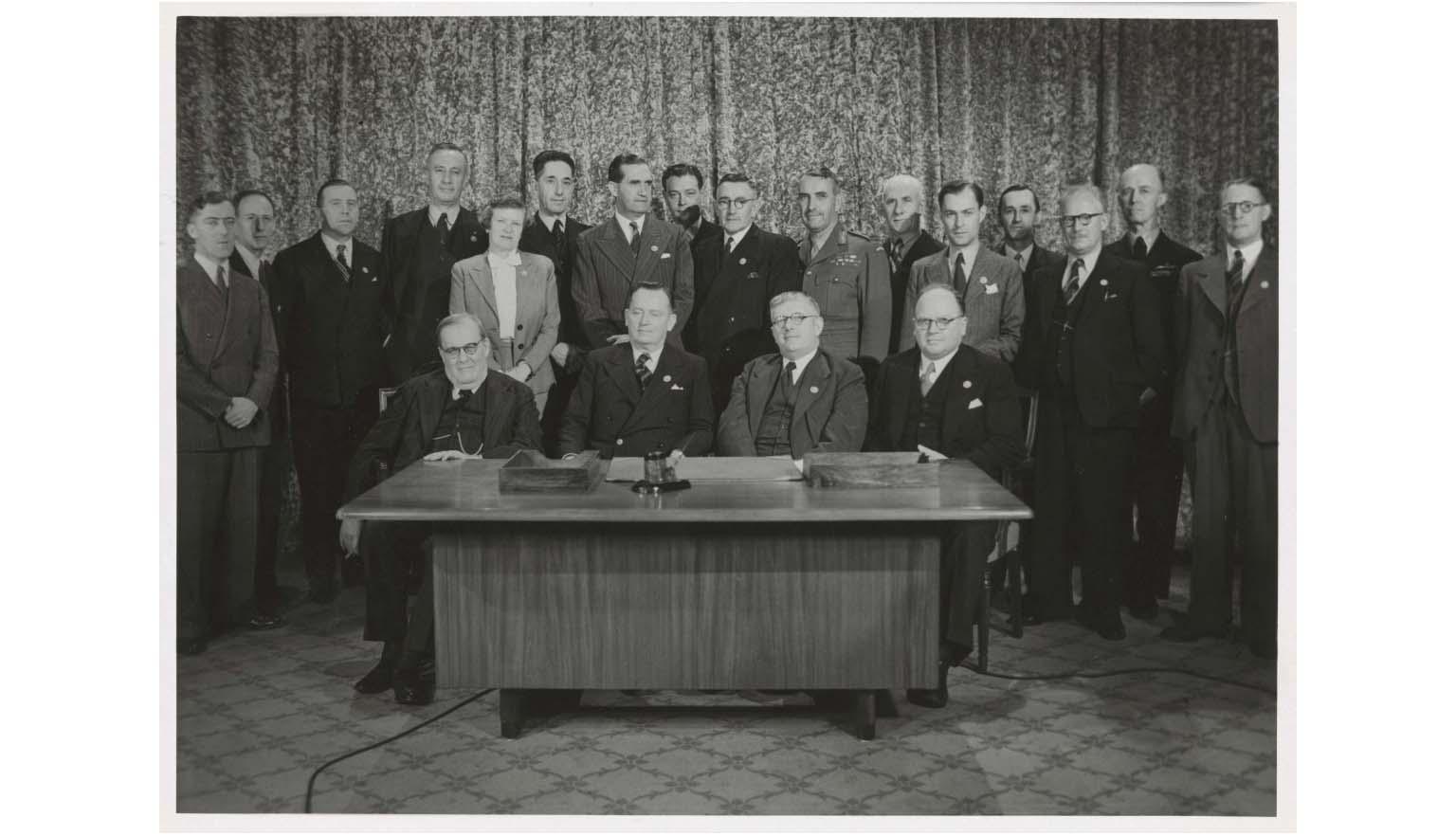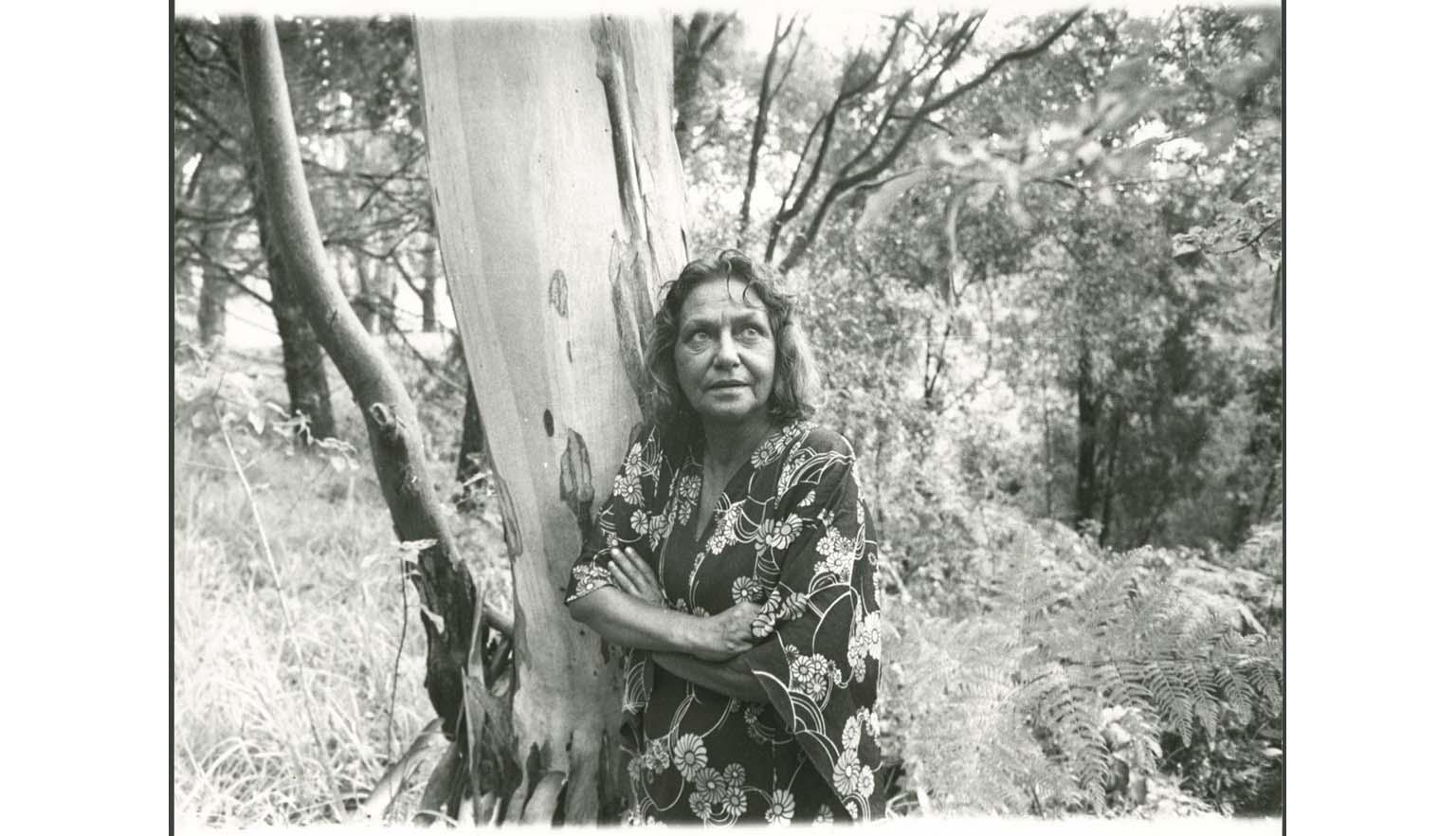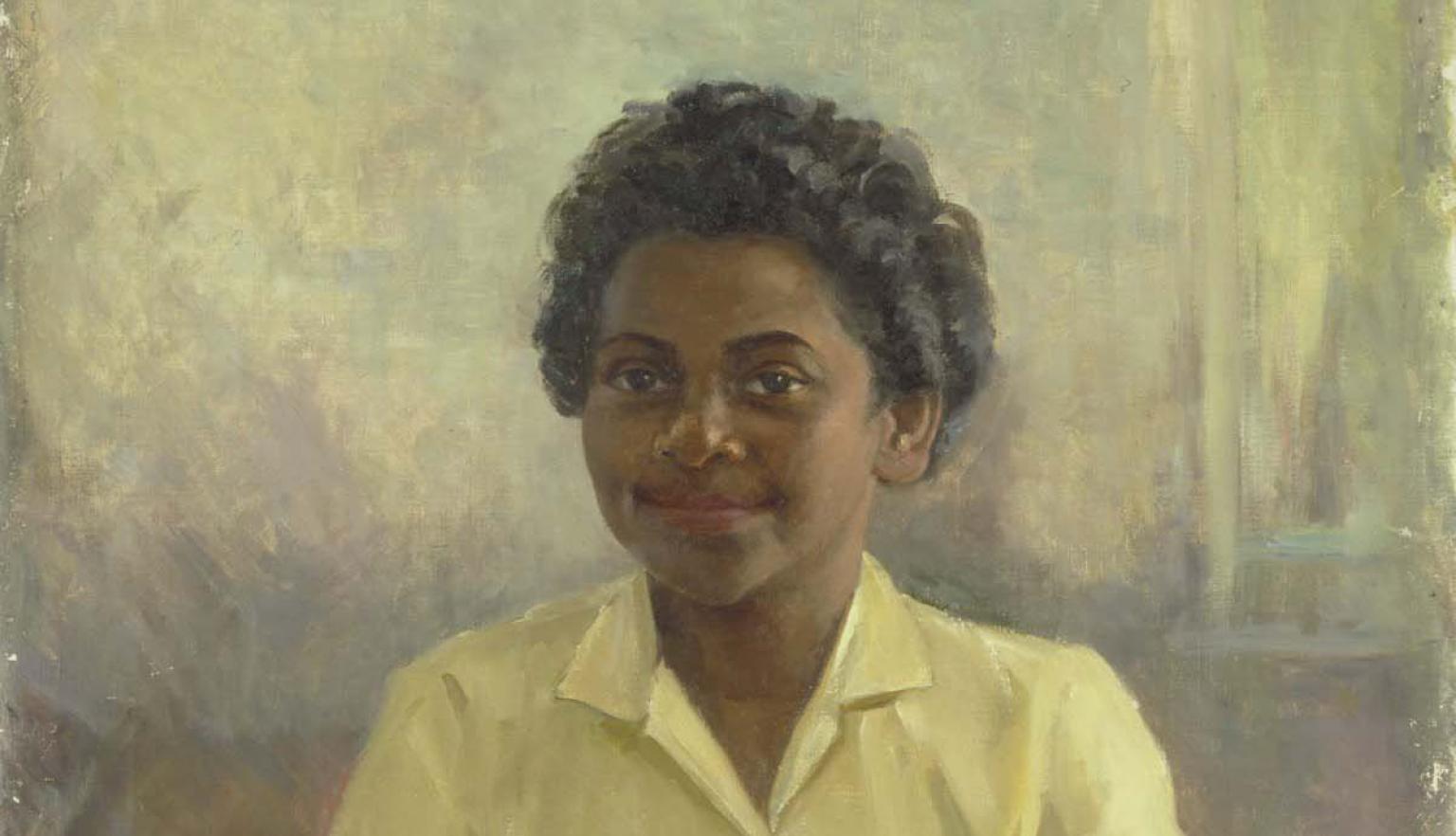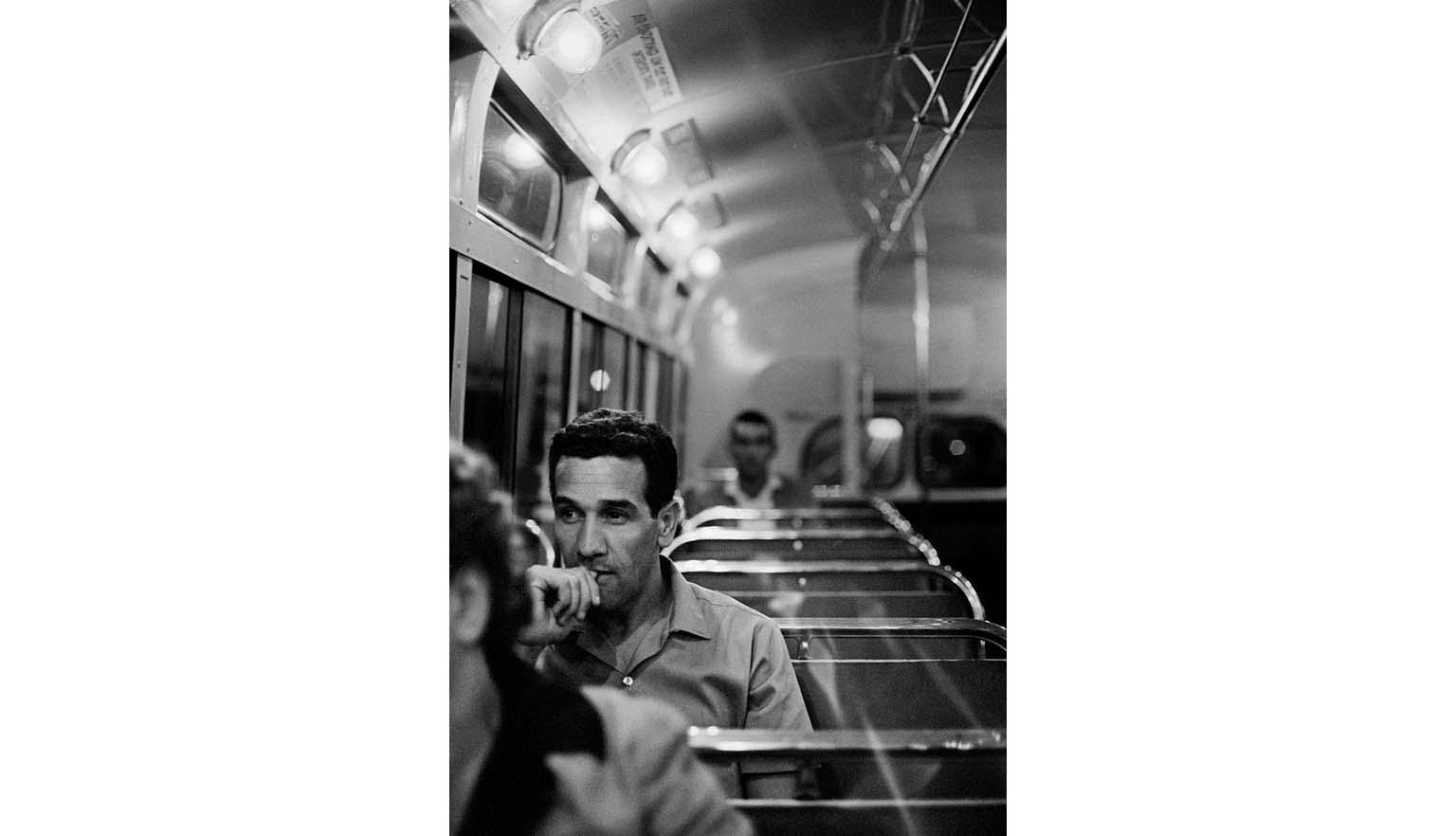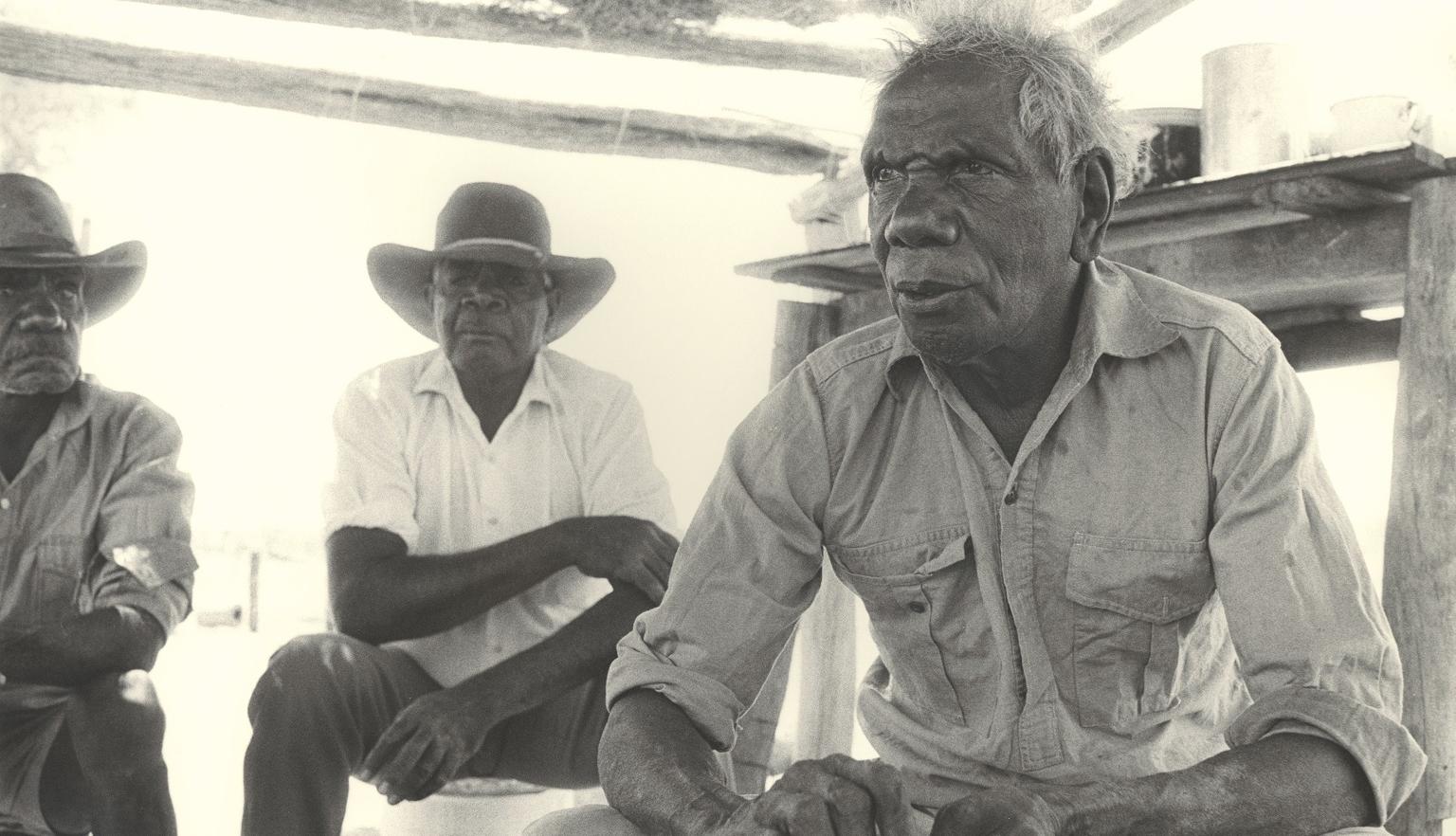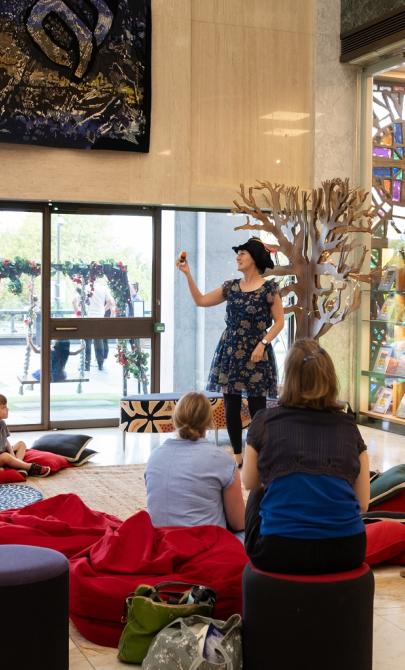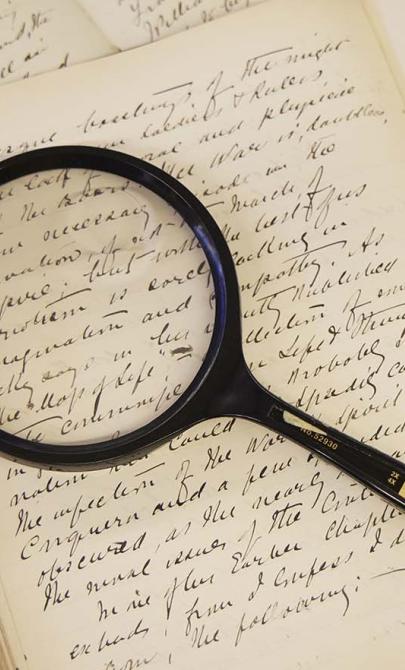Events that led to the 1967 Referendum
1901 - 1967
This timeline highlights the key events, laws and campaigns from Federation to 1967 that shaped public attitudes and government policy. Together, they paved the way for the historic referendum recognising Aboriginal and Torres Strait Islander peoples.
Select timeline event to review additional information.
The Australian constitution comes into effect with the federation of Australia.
There are 2 sections referring to the Aboriginal people that marginalises and excludes Australia's Indigenous population, effectively making them second-class citizens in their own country.
The Aborigines Act 1905 passes in Western Australia, making the Chief Protector the legal guardian of all Aboriginal and half-caste children under the age of 16.
The Commonwealth Government's Invalid and Old Age Pension Act 1908 passes. It marks the first national social security benefits for all Australians, except Aboriginal people.
The Aborigines Protection Act 1909 passes in New South Wales:
- allows for Aboriginal children who are deemed by the court as 'neglected' to be removed from their families
- allows for the removal of Aboriginal people from towns
- prevents non-Aboriginal people from accessing reserves or associating with Aboriginal people.
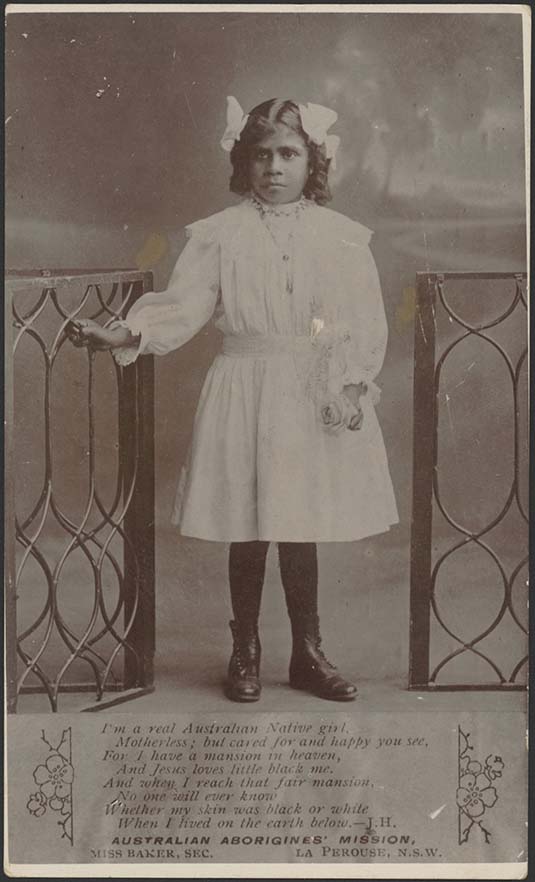
A real Australian native girl, Australian Aborigines' Mission, La Pérouse, New South Wales, 1910, nla.gov.au/nla.obj-137118878

The first Commonwealth census defines 'Aboriginal native'—'half-castes' are not considered Aboriginal and can be counted in the census. However, according to the constitution, 'full-blooded' Aboriginal people cannot be counted in the census.
At the start of World War I, Indigenous Australians are unable to enlist in the military. In 1917, a new military order allows half-castes to enlist at the discretion of the examining medical officer.
After the war, Indigenous veterans seldom receive recognition for their service and are often denied a 'soldier settler block', an entitlement given to other veterans of the war.
Amendments to the New South Wales Aborigines Protection Act 1909 result in the government-sanctioned practice of removing Indigenous children from their family at any time, without having to establish their neglect through the court. These children usually receive little education and are trained as manual labourers and domestic servants. (Later, children who were subjected to this forced removal became known as the Stolen Generations.)
Australian Aboriginal Progressive Association (AAPA) forms and campaigns for Indigenous rights and an end to the forced removal of Aboriginal children.
The Australian Aborigines League (AAL) is established by Aboriginal leader William Cooper. The league petitions King George V for the representation of Aboriginal people in Federal Parliament.
Conference of Chief Protectors and Boards, which controls the Aboriginal people in the states and in the Northern Territory, approve an assimilation policy for those of mixed descent.
Day of Mourning is declared on 26 January, marking 150 years of European occupation. The protest, led by Jack Patten, stresses the need for Aboriginal people to be consulted in policy decisions and their implementation, for full citizenship rights and for the Commonwealth to have greater control over Aboriginal affairs.
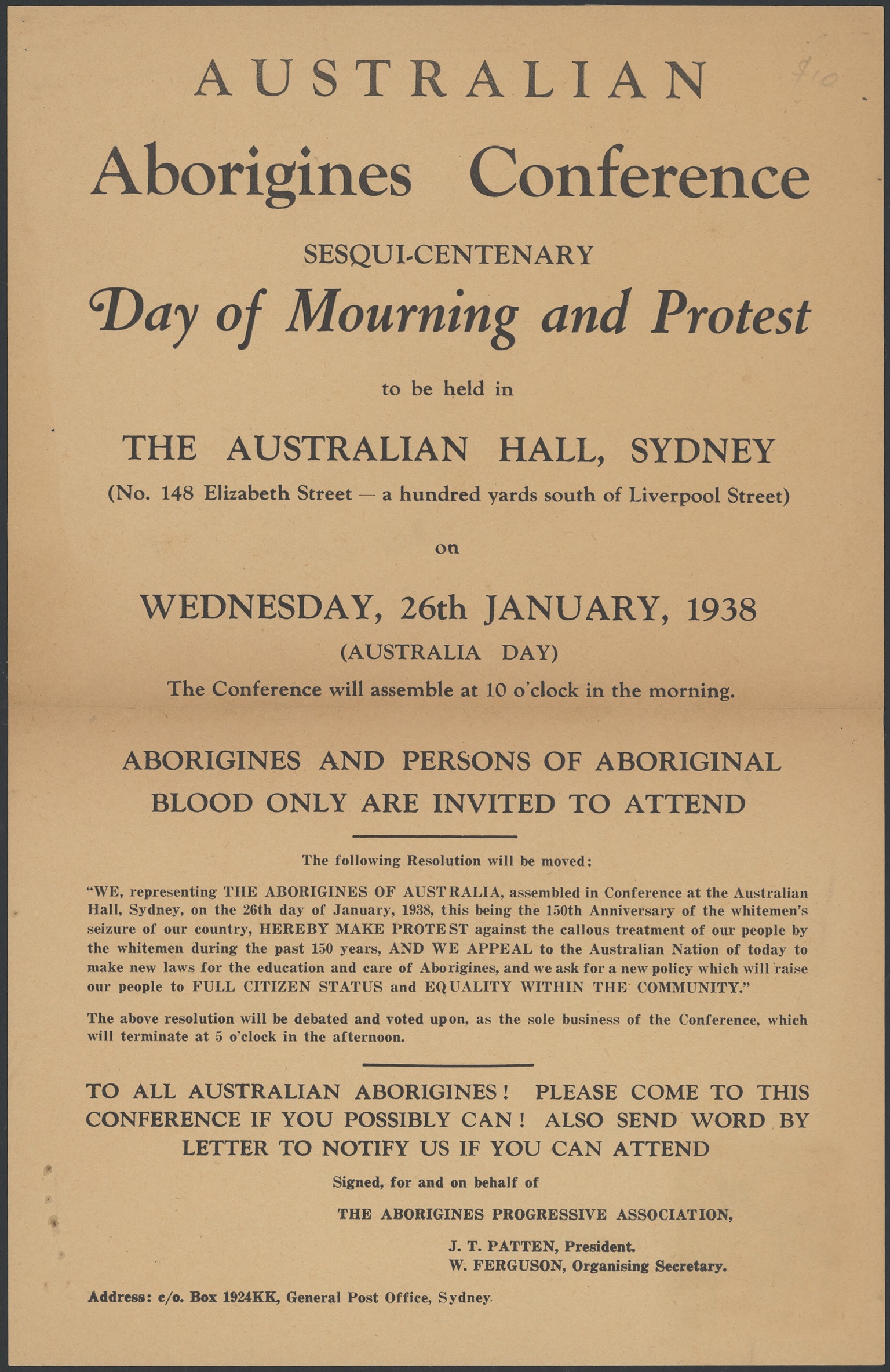
JT Patten, W Ferguson and the Aborigines Progressive Association, Australian Aborigines Conference : sesqui-centenary Day of Mourning and Protest to be held in the Australian Hall, Sydney ... on Wednesday, 26th January 1938 (Australia Day), 1983, nla.gov.au/nla.obj-348899812

Protest at Cummeragunja Mission in New South Wales leads to a walk-off by Aboriginal Australians over malnutrition, ill treatment and harsh state control. They cross the Murray River into Victoria and set up a new camp, leading to the arrest of many people including Jack Patten.
During World War II, soldiers of the Torres Strait Light Infantry Battalion receive one-third of the pay of other Australian soldiers. Once again, at the conclusion of the war, returned Indigenous soldiers are often not granted land under the War Service Land Settlement Agreement.
Australia is one of the first signatories of the United Nations Declaration of Human Rights when it is proclaimed by the United Nations General Assembly in Paris.
Article 1 states:
All human beings are born free and equal in dignity and rights. They are endowed with reason and conscience and should act towards one another in a spirit of brotherhood.
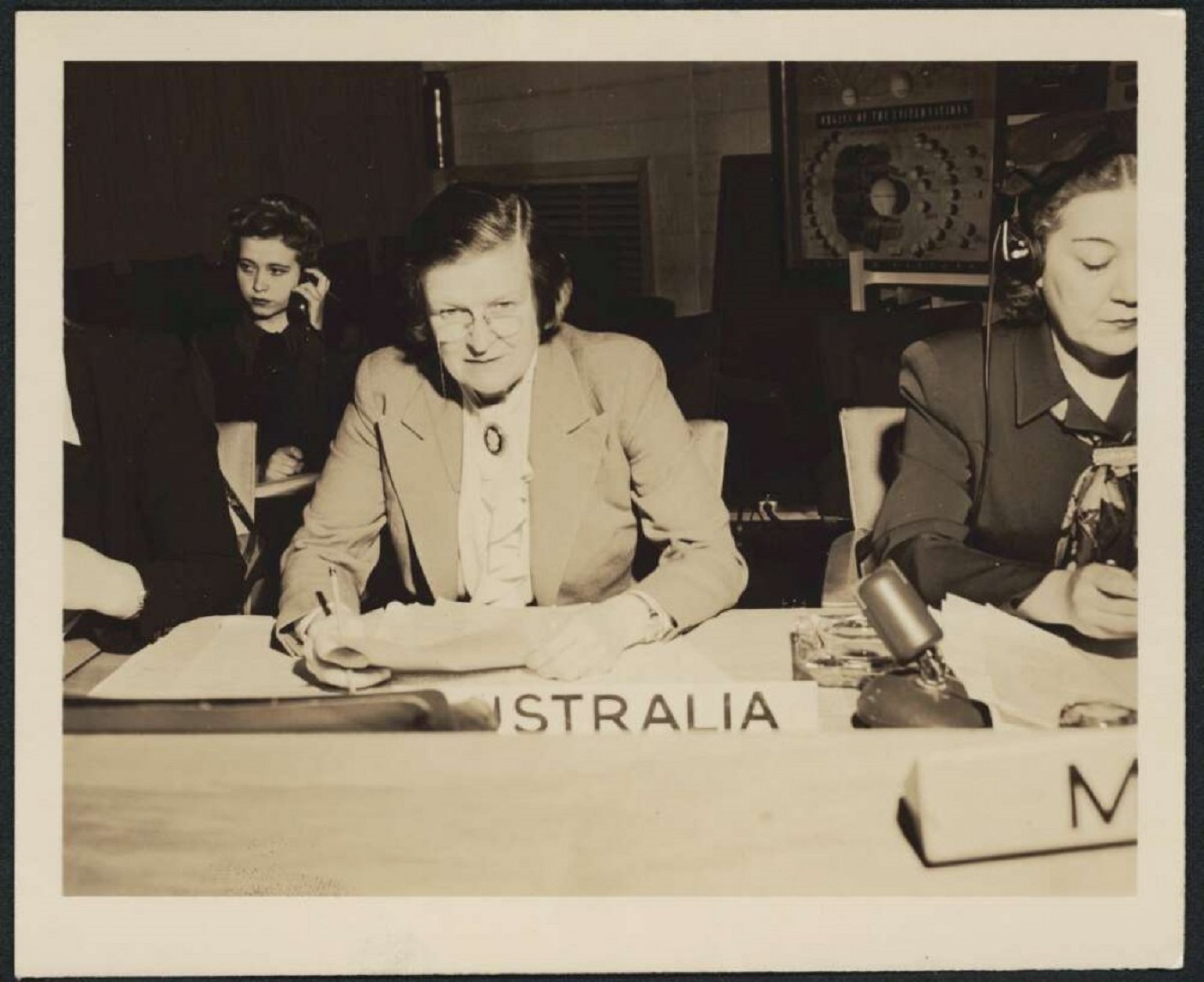
Jessie Street representing Australia at the United Nations, 194- , nla.gov.au/nla.obj-231551090

The Commonwealth Electoral Act 1949 is amended to allow Aboriginal and Torres Strait Islander peoples who served in the armed forces to vote in Federal elections.

Alfred Amos, Dorothy Amos with four local men in uniform, Darwin, Northern Territory, January 1947, nla.gov.au/nla.obj-151755028

Policy of assimilation is adopted at the third Native Welfare Conference.
The Commonwealth Government allows the Cattle Station Industry Award in the Northern Territory to make Aboriginals exempt, so denying them equal wages.
Jessie Street urges the Aboriginal leader Pearl Gibbs and South Sea Islander activist Faith Bandler to form the Aboriginal–Australian Fellowship and to start a petition for a referendum to change the constitution. Although they collect up to 100,000 signatures at this time, it takes a further 10 years of campaigning before the referendum takes place.
An inquiry into the welfare conditions of the Aboriginal people in the Laverton–Warburton region reveals deprivation, malnutrition and starvation of the local communities. Release of a film highlighting these issues causes public outrage and protest among the general Australian population.
Federal Council for the Advancement of Aborigines (FCAA) forms and becomes an important organisation in the campaign for the 1967 referendum by petitioning for changes in the constitution and by focusing attention on the treatment of Indigenous Australians. Kath Walker, who later called herself Oodgeroo Noonuccal, becomes FCAA's campaign national coordinator and tours Australia, raising awareness and lobbying for change.
The Commonwealth Electoral Act 1918 is amended so that Indigenous people can enrol to vote in Federal elections. However, unlike for other Australians, it is not compulsory for them to enrol. Labor minister Kim Beazley Senior argues for the deletion of sections 51 and 127 from the constitution, but it is argued that such changes disadvantage the Indigenous population.
The Equal Wages for Aborigines Committee is formed and campaigns against labour exploitation and for wage equality for Indigenous workers.
Elders of the Yirrkala clans send a petition against the proposed mining of their traditional lands to the prime minister on a bark painting.
The FCAA changes its name, at the urging of the Torres Strait Islander people, to the Federal Council of the Advancement of Aborigines and Torres Strait Islanders (FCAATSI).
The Freedom Ride, inspired by the African American Civil Rights movement in the United States, is organised by a group of students, and led by Aboriginal student Charles Perkins from the University of Sydney, to bring attention to the racism and segregation in western New South Wales towns.
A bill is put to the House of Representatives to repeal section 127 of the constitution but not section 51. Members from FCAATSI travel to Canberra to campaign for changes to section 51 as well.
Campaign for equal wages for Aboriginal pastoral workers begins.
The last population of Indigenous people living a traditional life in the Northern Territory is rounded up and relocated.
Indigenous workers at Wave Hill Station walk-off, led by Vincent Lingiari, a spokesman for the Gurindji people, as a protest over wages and poor working conditions on the station.
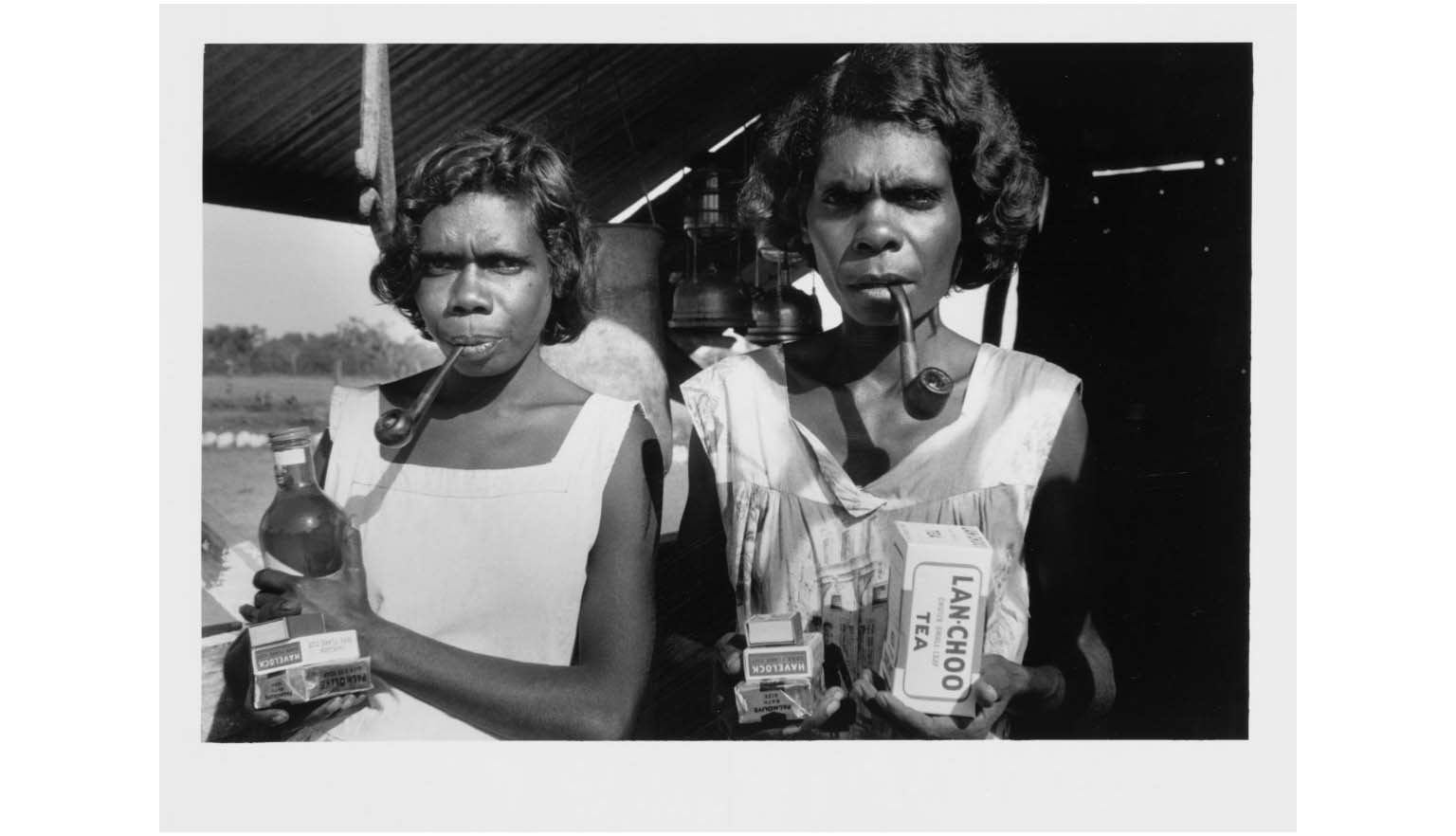
Jeff Carter, (1966), Pay day, Arnhem Land, 1966, nla.gov.au/nla.obj-147214917

Prime Minister Harold Holt announces that the Constitution Alteration Bill has passed in both Houses of Parliament allowing for a referendum to be called on whether or not Australia should change the wording of the constitution. The date is set for 27 May 1967. The constitution is formally changed on 10 August 1967.
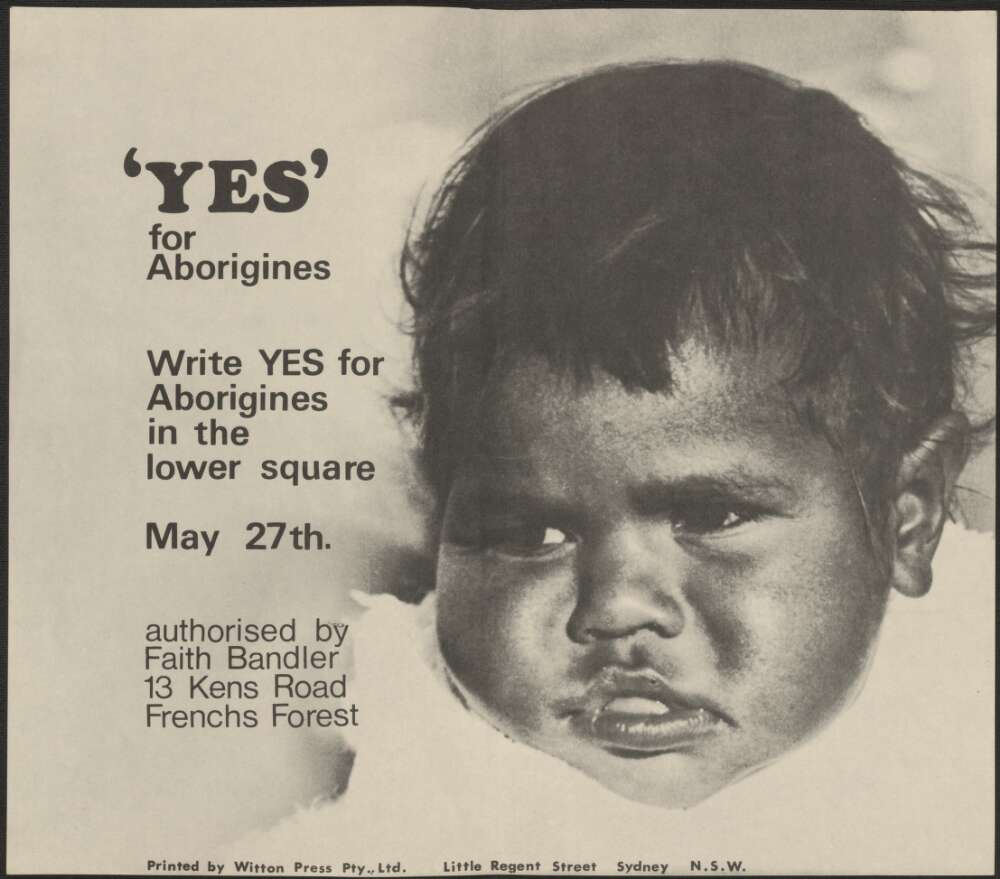
Faith Bandler and Jerry Rind, Yes for Aborigines : write yes for Aborigines in the lower square May 27th, 1967, nla.gov.au/nla.obj-136875607

Learning activities
These activities guide students in analysing historical cartoons, exploring human rights, and understanding the civil rights movement in Australia in the lead-up to the 1967 referendum.
Activity 1: Cartoon analysis – A Happy New Year: A Royal Greeting
Display the cartoon by Claude Marquet (A Happy New Year: A Royal Greeting, c. 1910).
- Ask students: How do you think non-Indigenous Australians viewed Aboriginal Australians at the time?
- Support the discussion using visual evidence from the cartoon:
- How King Billy is dressed
- The words he is holding and those he is ‘speaking’ in the caption
- Where he is living
- Facial expressions of King Billy and the woman
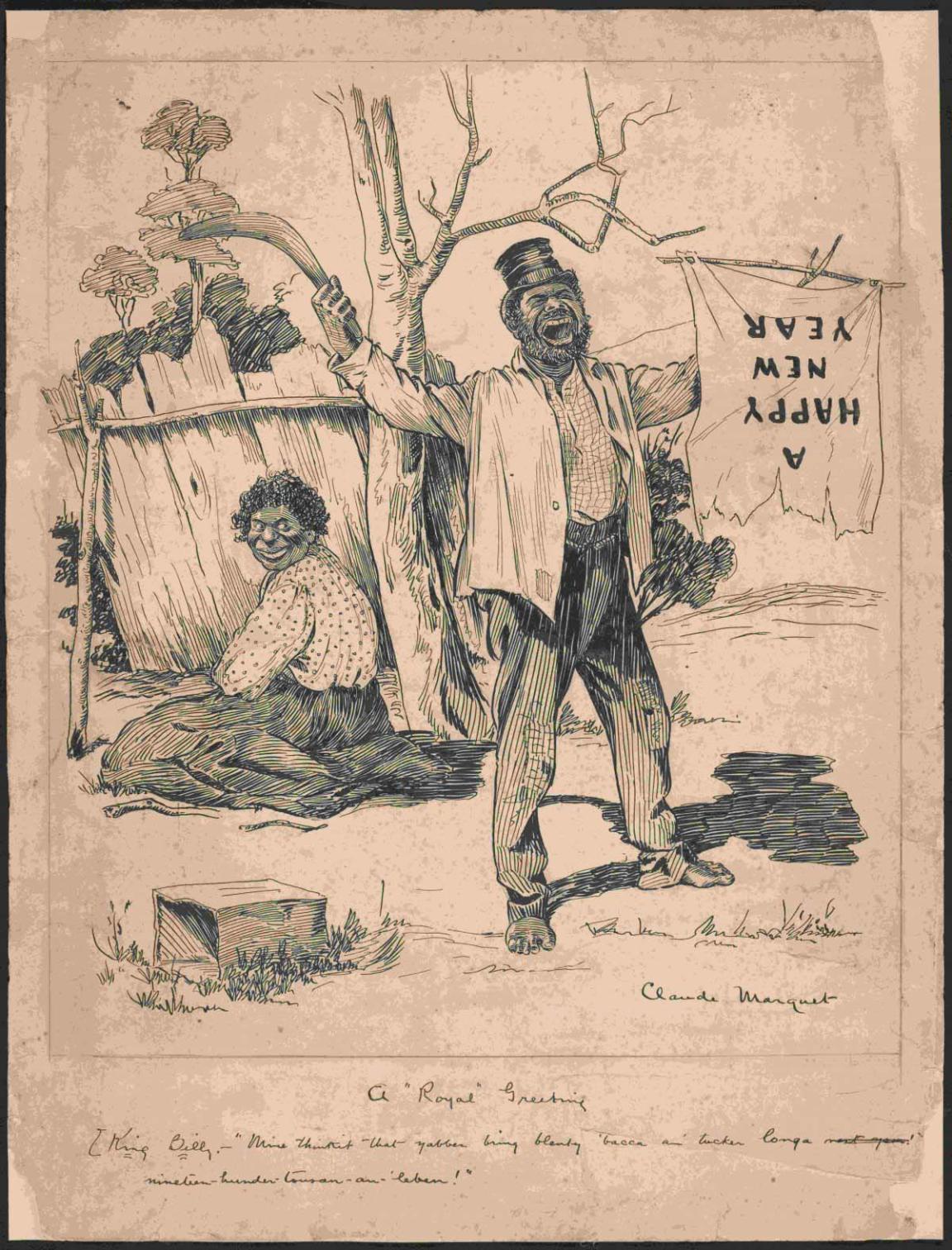
Claude Marquet, A happy new year - a royal greeting, approximately 1910, nla.gov.au/nla.obj-138207134
Claude Marquet, A happy new year - a royal greeting, approximately 1910, nla.gov.au/nla.obj-138207134
Activity 2: Human rights and the 1967 referendum
- Ask students to examine the Universal Declaration of Human Rights and identify which articles were not being upheld in relation to Indigenous Australians before 1967.
- For each article, explain how it was not upheld, using historical examples where possible (for example: voting rights, access to services, legal recognition).
Activity 3: International comparison
- Using a timeline, have students research key civil rights events in the United States during the 1950s and 1960s.
- Compare these events to what was happening in Australia around the same time. Questions to consider:
- How are the events similar or different?
- What were the methods of protest?
- How did the outcomes compare?
- What role did law, media or public opinion play in both contexts?
Activity 4: Influential people and groups
- In small groups, ask students to research a significant person or group involved in the Indigenous civil rights movement in Australia.
- Suggested individuals/groups include:
- Faith Bandler
- Charles Perkins
- Vincent Lingiari
- Jack Patten
- The Federal Council for the Advancement of Aborigines and Torres Strait Islanders (FCAATSI)
- Each group presents a short summary to the class, explaining:
- The person’s/group’s actions
- Their contributions to civil rights and the 1967 referendum
- The legacy of their work today
